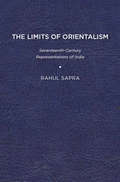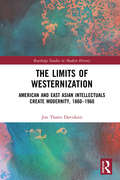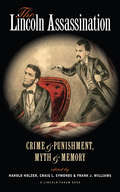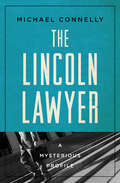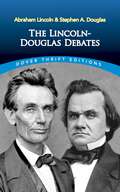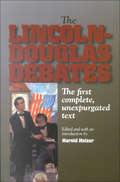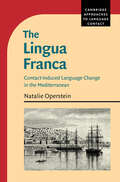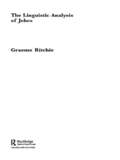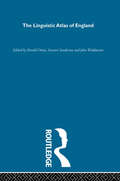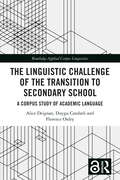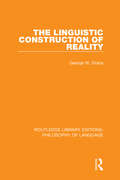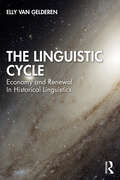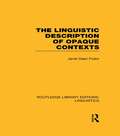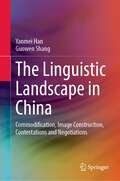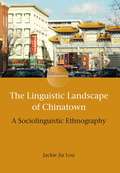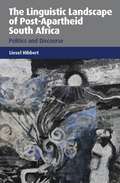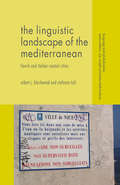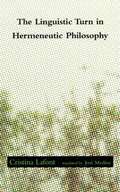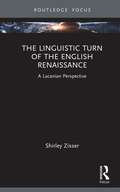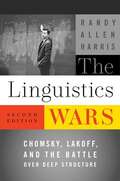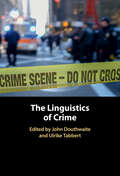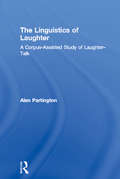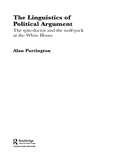- Table View
- List View
The Limits of Orientalism: Seventeenth-Century Representations of India
by Rahul SapraThe Limits of Orientalism: Seventeenth-Century Representations of India challenges the recent postcolonial readings of European, predominantly English, representations of India in the seventeenth century. Following Edward Said’s discourse of “Orientalism,” most postcolonial analyses of the seventeenth-century representations of India argue that the natives are represented as barbaric or exotic “others,” imagining these representations as products of colonial ideology. Such approaches tend to offer a homogeneous idea of the “native” and usually equate it with the term “Indian.” Sapra, however, argues that instead of representing all natives as barbaric “others,” the English drew parallels, especially between themselves and the Mughal aristocracy, associating with them as partners in trade and potential allies in war. While the Muslims are from the outset largely portrayed as highly civilized and cultured, early European writers tended to be more conflicted with Hindus, their first highly negative views undergoing a transformation that brings into question any straightforward Orientalist reading of the texts and anticipates the complexity of later representations of the indigenous peoples of the sub-continent. Sapra’s theoretical and methodological approach is influenced by such writers as Aijaz Ahmad and Denis Porter, who have highlighted powerful alternatives to Said’s discourse of “Orientalism.” Sapra historicizes European representations of the indigenous to draw attention to the contrasting approaches of the Portuguese, the Dutch and the English in relation to seventeenth-century India, effectively undermining comfortable notions of a homogenous “West.” Unlike the Portuguese, for whom the idea of a dynasty and the conversion of heathens went hand in hand with the idea of trade, for the Dutch and the English the primary consideration was commercial. In keeping with the commercial approach of the English East India Company, most English travelers, instead of representing the Muslims as barbaric “others,” highlight the compatibility between the two cultures and consistently praise the Mughal empire for its religious tolerance. In the representations of the Hindus, Sapra demonstrates that most writers, even while denigrating the Hindu religion, appreciate the civilized society of the Hindus. Moreover, in the representations of sati or widow-burning, a distinction needs to be made between the patriarchal and the Orientalist points of views, which are at variance with each other. The tension between the patriarchal and the Orientalist positions challenges Gayatri Chakravorty Spivak’s analysis of sati in “Can the Subaltern Speak?” which has become the standard model for most postcolonial appraisals of European representations of sati. The book highlights the lacuna in postcolonial readings by providing access to selections of commonly unavailable early-modern writings by Thomas Roe, Edward Terry, Henry Lord, Thomas Coryate, Alexander Hamilton and other the records of the East India Company, which makes the book vital for students of theory, European and South-Asian history, and Renaissance literatures. Published by University of Delaware Press. Distributed worldwide by Rutgers University Press.
The Limits of Westernization: American and East Asian Intellectuals Create Modernity, 1860 – 1960 (Routledge Studies in Modern History)
by Jon Thares DavidannThe rise of East Asia from the ashes of World War II in the late twentieth century has led to searching questions about the role the region will play in the world. The possibility that China will overtake the United States as a super power suggests the twenty-first century could become an Asian century. Given the dynamism of a new Asia, this study provides a crucial analysis of the origins and development of modern thought in East Asia and the United States, reevaluating the influence of the United States on East Asia in the twentieth century and giving greater voice to East Asians in the growth of their own ideas of modernity. While an abundance of scholarship exists on postwar modernization, there is a gap in the prewar origins and development of modern ideas in the late nineteenth and early twentieth century. In that time, influential intellectuals on both sides of the Pacific shaped modernity by rejecting the old order, and embracing progress, the new domain of science, democracy, racial relativism, internationalism, and civic duty. "The book is a seminal work that recalibrates an established narrative of modernity, the West as teacher and the East as pupil." – Prof. Dr. Andreas Niehaus, Head Department Languages and Cultures, Ghent University "Jon Thares Davidann forces a course correction in modernity studies with his insightful new book showing how from roughly 1860 to 1950 intellectuals from Japan, China, the United States, and Korea contributed to a hybrid form of modernization in East Asia with indigenous roots." - James I. Matray, California State University, Chico "This book is particularly timely given the current interest in the rise of East Asia in global history. Rarely can one interpret both East Asian and American thoughts as exquisitely as Dr. Davidann. He also tries to transcend both modernization theory and anti-imperialist/anti-American perspective. A very ambitious and important contribution to transpacific intellectual history." – Hiroo Nakajima, Osaka University "This interactive intellectual history presents an effective argument against civilizational essentialism. It details links in ideas across the Pacific, yet shows that East Asian thinkers led in building the versions of modernity that yielded divergent trajectories for China, Japan, and the U.S." – Patrick Manning, Andrew W. Mellon Professor of World History, Emeritus, University of Pittsburgh "This insightful and far-reaching study effectively reframes the scholarship on the development of modern East Asia. Arguing that historians too often have overstated the extent of westernization, Davidann reexamines in rich and colorful detail the roles played by many prominent East Asians and Americans in constructing hybrid modernities. In doing so, he significantly expands our understanding of the modern world on both sides of the Pacific." Joseph M. Henning, Associate Professor of History, Undergraduate Program Director, International and Global Studies "In this groundbreaking book, Davidann dismantles well-worn assumptions about the uniqueness of Western modernity. The remarkable power of East Asian economies demands new explanations for the development of modernity, departing from a singular concept of westernization. Through a close analysis of the intellectual careers of numerous Asians as well as interested Westerners, Davidann argues persuasively for the adoption of new forms of modernity that are unique to East Asian history. The author effectively demonstrates that East Asians modernized on their own terms, creating new social forms and definitions of modernity. The book stands as a much-needed antidote to modernization theory from a previous generation of global historical scholarship, and thus should find an important place on the bookshelf of what is often called "The New World History." - Prof. Rick Warner, Wabash College, President, World History Association, 2016-2017 Jon Davidann has written a wide-ranging and well documented exploration of the intellectual contacts and ideological influences across three of the
The Lincoln Assassination: Crime & Punishment, Myth & Memory (The\north's Civil War Ser.)
by Michael W. Kauffman Elizabeth D. Leonard Thomas R. Turner Richard Nelson Current Thomas P. Lowry Edward Steers Jr. Richard E. SloanDiverse perspectives on Lincoln&’s assassination, its aftermath, and its place in national memory from some of today&’s leading Lincoln scholars. The assassination of President Abraham Lincoln remains one of the most significant events in US history. It continues to attract the interest of scholars, writers, and armchair historians, ranging from painstaking new research to wild-eyed speculation. Now leading scholars of Lincoln and his murder offer in one volume their most salient studies and arguments about the assassination, its aftermath, the extraordinary—and complicated—public reaction, and the iconography that Lincoln&’s murder and deification inspired. Contributors also offer the latest accounts of the pursuit, prosecution, and punishment of the conspirators. Everything from graphic tributes to religious sermons, to spontaneous outbursts on the nation&’s city streets, to emotional mass-mourning at carefully organized funerals, as well as the imposition of military jurisprudence to try the conspirators, is examined in the light of fresh evidence and insightful analysis. Contributing to this volume are some of the finest scholars specializing in Lincoln&’s assassination. All have earned well-deserved reputations for the quality of their research, their originality, and their writing. In addition to the editors, contributors include Thomas R. Turner, Edward Steers Jr., Michael W. Kauffman, Thomas P. Lowry, Richard E. Sloan, Elizabeth D. Leonard, and Richard Nelson Current.
The Lincoln Lawyer: A Mysterious Profile (Mysterious Profiles)
by Michael ConnellyThe #1 New York Times–bestselling author tells the origin story of LA defense attorney Mickey Haller. In this concise, absorbing account, Michael Connelly reveals the work—and the strokes of luck—that contributed to his creation of the character Mickey Haller, the subject of multiple bestselling novels as well as the hit Netflix series. He reveals the lawyers, both fictional and real-life, who played a role in shaping the sharp-witted attorney who does his best work in the back seat—and the librarian who planted the seeds of his future literary career in the steamy, sticky Florida of his childhood. This is not only a portrait of Mickey Haller, but a fascinating look at the award-winning crime novelist who created him, along with Harry Bosch and other unforgettable characters. &“Haller is the kind of slick, cynical showman who can&’t resist making high drama out of every legal procedure. . . . There&’s always something deadly serious behind Connelly&’s entertaining courtroom high jinks.&” ―Marilyn Stasio, The New York Times &“If at first encounter Connelly seems primarily an exceptionally accomplished writer of crime novels, at closer examination he is also a mordant and knowing chronicler of the world in which crime takes place, i.e., our world.&” —Jonathan Yardley, The Washington Post
The Lincoln-Douglas Debates (Dover Thrift Editions)
by Abraham Lincoln Stephen A. Douglas Edwin Erle SparksOne of the most significant and far-reaching events in U. S. history, the Lincoln-Douglas debates of 1858 sharpened and brought to a head a number of crucial questions concerning slavery, states' rights, the legal status of blacks, and the effects of the Dred Scott decision. The debates were held as part of the campaign for the Illinois senatorial seat, pitting the two-term incumbent, Democrat Stephen A. Douglas, against the lesser-known Abraham Lincoln, a successful lawyer and former state politician who was the Republican candidate.Paving the way for modern discussions between political candidates, the Lincoln-Douglas debates fascinated nineteenth-century America and catapulted Lincoln into the spotlight. Although he lost the race to Douglas, the stature and recognition Lincoln gained during the exchanges helped propel him to the presidency in 1860, just two years later. This volume features rousing speeches by each candidate and the rejoinders and replies.
The Lincoln-Douglas Debates: The First Complete, Unexpurgated Text
by Harold HolzerThe seven debates between Abraham Lincoln and Stephen Douglas held during the Illinois senatorial race of 1858 are among the most important statements in American political history, dramatic struggles over the issues that would tear apart the nation in the Civil War: the virtues of a republic and the evils of slavery. In this acclaimed book, Holzer brings us as close as possible to what Lincoln and Douglas actually said, Using transcripts of Lincoln's speeches as recorded by the pro-Douglas newspaper, and vice-versa, he offers the most reliable, unedited record available of the debates. Also included are background on the sites, crowd comments, and a new introduction."A vivid, boisterous picture of politics during our most divisive period…This fresh, fascinating examination…. deserves a place in all American history collection."-Library Journal
The Lingua Franca: Contact-Induced Language Change in the Mediterranean (Cambridge Approaches to Language Contact)
by Natalie OpersteinWhose name is hidden behind the anonymity of the key publication on Mediterranean Lingua Franca? What linguistic reality does the label 'Lingua Franca' conceal? These and related questions are explored in this new book on an enduringly important topic. The book presents a typologically informed analysis of Mediterranean Lingua Franca, as documented in the Dictionnaire de la langue franque ou petit mauresque, which provides an important historical snapshot of contact-induced language change. Based on a close study of the Dictionnaire in its historical and linguistic context, the book proposes hypotheses concerning its models, authorship and publication history, and examines the place of the Dictionnaire's Lingua Franca in the structural typological space between Romance languages, on the one hand, and pidgins, on the other. It refines our understanding of the typology of contact outcomes while at the same time opening unexpected new avenues for both linguistic and historical research.
The Linguistic Analysis of Jokes: Graeme Ritchie (Routledge Studies in Linguistics #Vol. 2)
by Graeme RitchieThis book starts from three observations. First, the use of humour is a complex, puzzling, and idiosyncratically human form of behaviour (and hence is of scientific interest). Second, there is currently no theory of how humour works. Third, one useful step towards a theory of humour is to analyze humorous items in precise detail, in order to understand their mechanisms.The author begins by considering how to study jokes rigorously: the assumptions to make, the guidelines to follow and the pitfalls to avoid. A critique of other work on humour is also provided. This introduces some important concepts, and also demonstrates the lack of agreement about what a theory of humour should look like. The language devices used in various jokes, such as puns or humour based on misinterpretation, are analysed in detail. The central part of the book develops, and demonstrates, proposals for how best to analyze the workings of simple jokes. Finally, the author makes some general suggestions about the language devices that seem to be central to the construction of jokes.The Linguistic Analysis of Jokes will be invaluable for researchers and advanced students of humour research, linguistics and cognitive science.
The Linguistic Atlas of England (Routledge Library Editions)
by John Widdowson Stewart Sanderson Harold OrtonThis fascinating record of how English is spoken in England is now being reprinted. Over 400 maps detail differences in phonology, lexicon, morphology and syntax. The Atlas provides a unique survey of the linguistic geography of England.This volume was inspired by the English Dialect Survey which set out to elicit information about the current dialectical usages of the older members of the farming communities throughout rural England. The Survey secondly mapped this information to illustrate the regional distributions of those features of their speech which persisted from ancient times.Published after Orton's death, the publication of this volume testified to the sustained interest in the lingusitic geography of England.
The Linguistic Challenge of the Transition to Secondary School: A Corpus Study of Academic Language (Routledge Applied Corpus Linguistics)
by Alice Deignan Duygu Candarli Florence OxleyThis book provides a unique analysis and description of the linguistic challenges faced by school students as they move from primary to secondary school, a major transition, which some students struggle with emotionally and academically. The study: • draws on a bespoke corpus of 2.5 million words of written materials and transcribed classroom recordings, provided by the project's partner schools; • combines quantitative and qualitative approaches to the corpus data to explore linguistic variation across school levels, registers and subjects; • describes the procedures of corpus compilation and analysis of written and spoken academic language, showing how modern corpus tools can be applied to this far-reaching social and educational issue; • uncovers differences and similarities between the academic language that school children are exposed to at primary and secondary school, contrasting this against the backdrop of the non-academic language that they encounter outside school. This book is important reading for advanced students and researchers in corpus linguistics, applied linguistics and teacher education. It carries implications for policymakers and schools looking to support students at this critical point in their schooling.
The Linguistic Construction of Reality
by George W. GraceThis book, originally published in 1987, considers how the science of linguistics creates its own objects of study. It argues that language is the one essential tool in the ‘social construction of reality’ – the way in which our environment as we perceive and respond to it is actually created by the cultural constructs we bring to bear on it – and that it is also the means by which this reality, once constructed, is preserved and transmitted from person to person and from generation to generation. Hence it is entirely appropriate to refer to the linguistic construction of reality.
The Linguistic Cycle: Economy and Renewal in Historical Linguistics
by Elly van GelderenCyclical language change is a linguistic process by which a word, phrase, or part of the grammar loses its meaning or function and is then replaced by another. This can even happen on the level of an entire language, which can experience a change in the language family it is a part of. This new text is a comprehensive introduction to this phenomenon, the mechanisms underlying it, and the relations between the different types of cycles. Elly van Gelderen reviews the subject widely and holistically, defining key terms and comprehensively presenting diverse theoretical perspectives and empirical findings. With coverage of a variety of micro cycles and the more controversial macro cycles, incorporating cutting-edge work on grammaticalization, and drawing on examples from many languages and language families, this book accessibly guides readers through the state of the art in the field. With practical methodological guidance on how to identify and investigate linguistic cycles, and an array of useful pedagogical features, the book provides a coherent framework for approaching, understanding, and furthering research in linguistic cycles. This text will be an indispensable resource for advanced students and researchers in historical and diachronic linguistics, language typology, and linguistic and grammatical theory.
The Linguistic Description of Opaque Contexts (Routledge Library Editions: Linguistics)
by Janet Dean FodorThe study of opacity falls under the general programme of showing how the meaning of any complex sentence is composed from the meanings of its constituent clauses, phrases and words. Opaque constructions are special from this point of view because the compositional principles that determine their meaning are so intricate. The main argument of this book is that the systematic ambiguity of opaque constructions has generally been underestimated.
The Linguistic Landscape in China: Commodification, Image Construction, Contestations and Negotiations
by Yanmei Han Guowen ShangThis book explores the linguistic landscape of various cities in China, systematically examining the intricate relationship among language policy, language ideologies, and visible multilingualism in the public space. Framed in the spatial triad encompassing spatial practice, conceived space and lived space, this study conceptualizes linguistic landscape practices, language policy and residents’ perception as three interconnected dimensions of linguistic landscape to unpack the motives, manipulations, contestations and negotiations behind the language display in China, a highly regulated society that attaches great significance to language planning. Taking the linguistic landscape of key cities as cases, this book demonstrates how linguistic landscape mediates city governance and image/identity construction, ontestations and negotiations in language ideologies, and in what ways the agency of linguistic landscape contributes to the harmony of language life in the multilingual society. The book is unique in three aspects. First, it is the first book with a keen focus on mapping the linguistic landscape in the Chinese contexts. Second, it uncovers the relationship between linguistic diversity on display and macro issues concerning city image construction, language politics and language ideologies. Third, it provides a lens to look into China’s governance of the public space and instrumentalization of multiple languages in the globalized era.
The Linguistic Landscape of Chinatown: A Sociolinguistic Ethnography
by Jackie Jia LouThis book presents a sociolinguistic ethnography of the linguistic landscape of Chinatown in Washington, DC. The book sheds a unique light on the impact of urban development on traditionally ethnic neighbourhoods and discusses the various historical, social and cultural factors that contribute to this area's shifting linguistic landscape. Based on fieldwork, interviews with residents and visitors and analysis of community meetings and public policies, it provides an in-depth study of the production and consumption of linguistic landscape as a cultural text. Following a geosemiotic analysis of shop signs, it traces the multiple historical trajectories of discourse which shaped the bilingual landscape of the neighbourhood. Turning to the spatial contexts, it then compares and contrasts the situated meaning of the linguistic landscape for residents, community organisers and urban planners.
The Linguistic Landscape of Post-Apartheid South Africa: Politics and Discourse
by Liesel HibbertThe appointment of Nelson Mandela as President of South Africa in 1994 signalled the end of apartheid and transition to a new democratic constitution. This book studies discursive trends during the first twenty years of the new democracy, outlining the highlights and challenges of transforming policy, practice and discursive formations. The book analyses a range of discourses which signal how and by what processes the linguistic landscape and identities of South Africa's inhabitants have changed in this time, finding that struggles in South African politics go hand in hand with shifts in the linguistic landscape. In a country now characterised by multilingualism, heteroglossia, polyphony and translanguaging, the author debates where the discourse practices of those born post-1994 may lead.
The Linguistic Landscape of the Mediterranean: French and Italian Coastal Cities (Language and Globalization)
by Robert J. Blackwood Stefania TufiThis book explores the Linguistic Landscapes of ten French and Italian Mediterranean coastal cities. The authors address the national languages, the regional languages and dialects, migrant languages, and the English language, as they collectively mark the public space.
The Linguistic Shaping of Thought: A Study in the Impact of Language on Thinking in China and the West
by A. H. Bloom Alfred H. BloomFirst published in 1981. Routledge is an imprint of Taylor & Francis, an informa company.
The Linguistic Turn in Hermeneutic Philosophy
by Cristina Lafont José MedinaThe linguistic turn in German philosophy was initiated in the eighteenth century in the work of Johann Georg Hamann, Johann Gottfried von Herder, and Wilhelm von Humboldt. It was further developed in this century by Martin Heidegger, and Hans-Georg Gadamer extended its influence to contemporary philosophers such as Karl-Otto Apel and Habermas. This tradition focuses on the world-disclosing dimension of language, emphasizing its communicative over its cognitive function. Although this study is concerned primarily with the German tradition of linguistic philosophy, it is very much informed by the parallel linguistic turn in Anglo-American philosophy, especially the development of theories of direct reference. Cristina Lafont draws upon Hilary Putnam's work in particular to criticize the linguistic idealism and relativism of the German tradition, which she traces back to the assumption that meaning determines reference. Part I is a reconstruction of the linguistic turn in German philosophy from Hamann to Gadamer. Part II offers the deepest account to date of Habermas's approach to language. Part III shows how the shortcomings of German linguistic philosophy can be avoided by developing a consistent and more defensible version of Habermas' theory of communicative rationality.
The Linguistic Turn of the English Renaissance: A Lacanian Perspective (Routledge Focus on Mental Health)
by Shirley ZisserThe Linguistic Turn of the English Renaissance: A Lacanian Perspective examines a selection of cultural phenomena of the English Renaissance, all of which include a focus on language, from a Lacanian perspective. The book examines four inter-related cultural symptoms of the English Renaissance: the paucity of painting, the interest in rhetoric, the emergence of a literary style focusing on form and a fascination with the myth of Orpheus. The book argues that the English Renaissance, an apex of rhetorical theory, can offer psychoanalysis further knowledge concerning the intrication of language and flesh, especially where feminine jouissance is at stake. These language-centred phenomena emerge against the backdrop of a peculiar configuration of the visual field, which in contrast to other cultures of the European Renaissance is largely barren of painting other than portraiture. The book will be of interest to psychoanalysts, scholars of Renaissance culture and those interested in the psychoanalytic study of culture.
The Linguistics Wars: Chomsky, Lakoff, and The Battle Over Deep Structure
by Randy Allen HarrisThis book tells the tumultuous history of language and cognition studies from the rise of Noam Chomsky's Transformational Grammar to the current day. Focusing on the rupture that split the field between Chomsky's structuralist vision and George Lakoff's meaning-driven theories, Randy Allen Harris portrays the extraordinary personalities that were central to the dispute and its aftermath, alongside the data, technical developments, and social currents that fueled the unfolding and expanding schism. This new edition, updated to cover the more than twenty-five years since its original publication and to trace the impact of that schism on the shape of linguistics in the twenty-first century, is essential reading for all those interested in the study of language, the making of knowledge, and some of the most brilliant minds of our era.
The Linguistics of British Sign Language
by Bencie Woll Rachel Sutton-Spence<P>This is the first detailed explanation of the way British Sign Language works and is the product of many years' experience of research and teaching sign linguistics to deaf and hearing people. It assumes no previous knowledge of linguistics or sign language, and is not structured around traditional headings such as phonology, morphology and syntax. Instead it is set out in such a way as to help learners and their teachers understand the linguistic principles behind the language. There are sections on BSL grammar and also on the use of BSL, including social acceptability in signing, variation, and poetry and humour in BSL. <P>Technical terms and linguistic jargon are kept to a minimum, and the text contains many examples from English, BSL, and other spoken and sign languages. The book is amply illustrated and contains exercises, as well as a reading list for further study.
The Linguistics of Crime
by Ulrike Tabbert John DouthwaiteBringing together scholars from a range of disciplines, this book explores the analysis of crime-related language. Drawing on ideas from stylistics, pragmatics, cognitive linguistics, metaphor theory, critical discourse analysis, multimodality, corpus linguistics, and intertextuality, it compares and contrasts the linguistic representation of crime across a range of genres, both fictitious (crime novels, and crime in TV, film and music), and in real life (crime reporting, prison discourse, and statements used in courts). It touches on current political topics like #BlackLivesMatter, human (child) trafficking, and the genocide of the Kurds among others, making it essential reading for linguists, criminologists and those with a general interest in crime-related topics alike. Covering a variety of text genres and methodological approaches, and united by the aim of deciphering how crime is portrayed ideologically, this book is the next step in developing research at the intersection of linguistics, criminology, literature and media studies.
The Linguistics of Laughter: A Corpus-Assisted Study of Laughter-Talk (Routledge Studies in Linguistics)
by Alan PartingtonThe Linguistics of Laughter examines what speakers try to achieve by producing ‘laughter-talk’ (the talk preceding and eliciting an episode of laughter) and, by using abundant examples from language corpora, what hearers are signalling when they produce laughter. In particular, Alan Partington focuses on the tactical use of laughter-talk to achieve specific rhetorical, and strategic, ends: for example, to construct an identity, to make an argumentative point, to threaten someone else’s face or save one's own. Although laughter and humour are by no means always related, the book also considers the implications these corpus-based observations may have about humour theory in general. As one of the first works to have recourse to such a sizeable databank of examples of laughter in spontaneous running talk, this impressive volume is an essential point of reference and an inspiration for scholars with an interest in corpus linguistics, discourse, humour, wordplay, irony and laughter-talk as a social phenomenon.
The Linguistics of Political Argument: The Spin-Doctor and the Wolf-Pack at the White House (Routledge Advances in Corpus Linguistics #Vol. 4)
by Alan PartingtonThis book examines the relationship between the White House, in the person of its press secretary, and the press corps through a linguistic analysis of the language used by both sides. A corpus was compiled of around fifty press briefings from the late Clinton years. A wide range of topics are discussed from the Kosovo crisis to the Clinton-Lewinsky affair.This work is highly original in demonstrating how concordance technology and the detailed linguistic evidence available in corpora can be used to study discourse features of text and the communicative strategies of speakers. It will be of vital interest to all linguists interested in corpus-based linguistics and pragmatics, as well as sociolinguists and students and scholars of communications, politics and the media.
